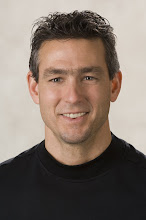And for good reason: Heart Disease is the leading cause of death in the US; Stoke the 3rd leading cause. The American Heart Association (AHA) states that 67M Americans currently have Heart Disease. Another 47M Americans show 3 or more symptoms of Heart Disease, according to Center for Disease Control (CDC). Together, that’s 40% of all Americans!
Today is also Valentine's day! So I thought a few words close the the heart would be appropriate.
Heart rate zones are quite simply ranges of heart beat rates where the heart, lungs, and circulatory system convert energy sources to energy uniquely within each range. Between your Maximum Heart Rate (MaxHR) and Ambient Heart Rate are five (or seven, depending on who you ask) heart rate zones, all based on a percentage of Maximum Heart Rate. Determining your MaxHR can be either very straightforward, or somewhat difficult. A common formula used to find your MaxHR is 220 minus your age. While a reasonable place to start for most people, this method of determining MaxHR can be highly inaccurate. Check with your fitness expert to determine a more accurate number for yourself.
While beyond the scope of this note to provide a complete tutorial of heart rate zones and heart rate zone training (send me an email to request, or check the Fitness Tips Section of Our Website for our Heart Rate Zone Training to Look and Feel Fantastic Report for a more detailed paper), since it's Valentine's Day, a few tips on Zone 5, also known as The Red would seem appropriate.
This zone, sometimes also called The Hot Zone, is where heart rates exceed 90% of MaxHR. At this rate, fuel comes completely and exclusively from the purest form of energy ... a broken down glycogen molecule called adenosine triphosphate, or ATP. Zone 5 ATP stores are depleted at this pace within just 5 to 35 seconds (depending on fitness level). At that point your body will tell you in no uncertain terms that you must slow down or stop to utilized more moderate energy systems and replenish the depleted ATP levels. Caloric consumption in this zone can be as much as a hundred times what is during a resting state. Like anaerobic exercise in zone 4, zone 5 metabolism also generates a lot of lactic acid.
Even world class aerobic anomalies like Lance Armstrong can only hold the red zone for a few minutes before needing to back off and replenish the ATP debt. Of course, with a 200 BPM MaxHR and an anaerobic threshold near 95% of that, Lance is burning fat while most of us are depleting ATP! As you can imaging, time in this zone must be very carefully managed. Indeed, for the most part only 0.5% to 1% of your total weekly training time should be spent in this zone. Most athletes train this zone with regular interval training. And while most exercisers will train in this zone only sparingly, it is still an effective, beneficial, and necessary part of good heart health.
So what is an interval? Intervals are quite simply carefully prescribed short, but high intensity cardiovascular exercise followed by lengthier 'recovery' periods between. More complete info in intevals is also available in our New Enhanced Cardio program (details below), but in the spirit of Valentine's Day, here's a Great, Easy Hot Zone Interval program for you our your loved one:
- Complete a thorough 10 minute warmup
- Increase intensity for 2 minutes to a point where you feel 'winded'
- Rest for about a minute
- Increase intensity for 2 minutes until you feel some pain, but not agony
- Rest for about a minute
- Sprint for 30 seconds
- Rest for about a minute
- Sprint for 45 seconds
- Rest for about a minute
- Sprint for 1 minute
- Complete a thorough 10 minute warmdown
But if you're looking to significantly step up your Heart Health, do check out our new
Enhanced Cardiovascular Programming Model.
Intended to provide a higher level of service to clients interested in a more focused cardiovascular programming model, as well as a way for potential clients to gain limited exposure to one on one training, three new programs have been developed.
Maroon Program Participants Receive, Monthly:
- Cardio equipment access 4x/wk
- An introductory 1:1 cardio workout
- Individually tailored prescribed cardiovascular program (PreCOP)
- Weekly Tips Cardio Email
- $99/mo Non FT Clients
- $19/mo Current Active FT Clients
Gold Program Participants Receive, Monthly:
- All Maroon Program benefits
- A New Heart Rate Monitor
- Max Heartrate testing
- A one on one heart rate monitored personal training session
- A one on one heart rate monitored cardiovascular session
- FT cardio team membership
- $229/mo Non FT Clients
- $139/mo Current Active FT Clients
Platinum Program Participants Receive, Monthly:
- All Gold Program benefits
- An additional one one one heart rate monitored personal training session
- An additional one on one heart rate monitored cardiovascular session Enrollment into the FT MSP Maroon Nutrition Program (Spring 2009)
- $379/mo Non FT Clients
- $279/mo Current Active FT Clients



No comments:
Post a Comment